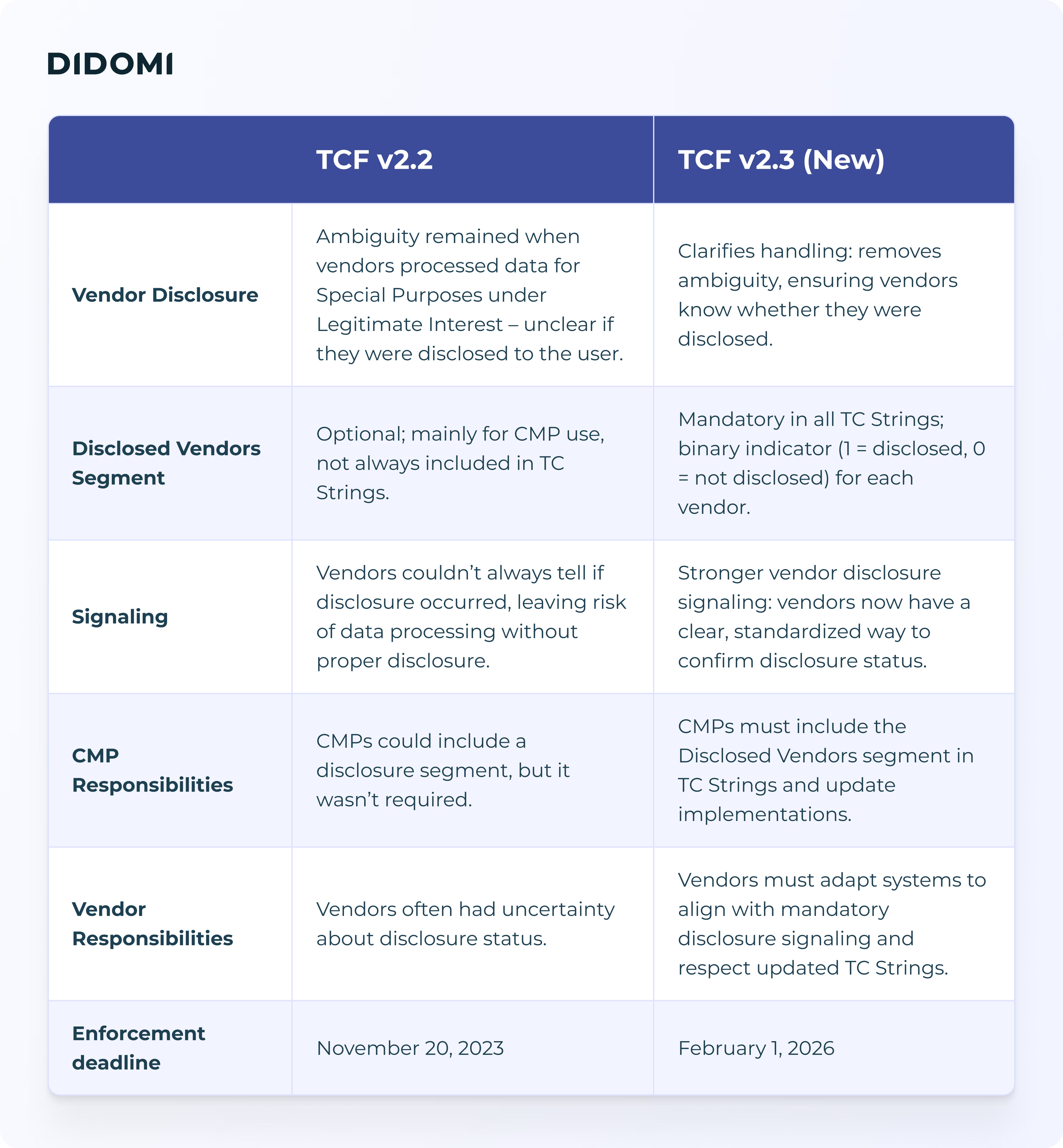Overview
The IAB Europe Transparency and Consent Framework (TCF) 2.3 introduces changes that impact how CMPs (Consent Management Platforms) handle TC Strings — particularly with the addition of a new disclosedVendors segment.
This article explains how Didomi’s CMP and SDK handle these updates, including requirements during the transition period and the creation and validation of TC Strings.
Transition Period Handling
To ensure compatibility between TCF 2.2 and 2.3, CMPs must handle TC Strings differently depending on when they were created:
-
Before 28 February 2026: We will continue to accept and process TC Strings that do not include the disclosedVendors segment. These strings remain valid.
-
After 28 February 2026: All new TC String will be generated with the disclosedVendors. Strings generated before this date remain valid.
This ensures a smooth transition to TCF 2.3 while maintaining backward compatibility during the transition period.
Disclosed Vendors Segment Compliance
Didomi’s SDK ensures that all vendors surfaced to the user are also included in the disclosedVendors segment when it is present in a TC String.
This guarantees alignment between what is shown in the user interface and what is recorded in the consent signal.
Vendors with Special Purposes Only
For vendors registered only for Special Purposes, the Didomi SDK continues to:
-
Set the Legitimate Interest (LI) bit to 1
-
Include these vendors in the CMP disclosure
This behavior remains unchanged from previous TCF versions and is still required under TCF 2.3.
User Interface and Resurfacing
You are not required to resurface the consent UI as part of this update.
Existing user choices remain valid, provided the TC String complies with the handling rules above.
Side-by-side comparison of TCF v2.2 vs v2.3
